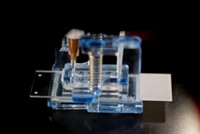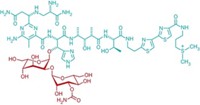Advertisement
Grab your lab coat. Let's get started
Welcome!
Welcome!
Create an account below to get 6 C&EN articles per month, receive newsletters and more - all free.
It seems this is your first time logging in online. Please enter the following information to continue.
As an ACS member you automatically get access to this site. All we need is few more details to create your reading experience.
Not you? Sign in with a different account.
Not you? Sign in with a different account.
ERROR 1
ERROR 1
ERROR 2
ERROR 2
ERROR 2
ERROR 2
ERROR 2
Password and Confirm password must match.
If you have an ACS member number, please enter it here so we can link this account to your membership. (optional)
ERROR 2
ACS values your privacy. By submitting your information, you are gaining access to C&EN and subscribing to our weekly newsletter. We use the information you provide to make your reading experience better, and we will never sell your data to third party members.
Biological Chemistry
Shedding Light On Lung Disease
Immunochemistry: Engineered antibody reduces inflammation in mice with lung condition
by Elizabeth K. Wilson
June 23, 2014
| A version of this story appeared in
Volume 92, Issue 25
A new study reveals the key role a protein plays in chronic obstructive pulmonary disease (COPD) and provides a potential lead for treating the incurable lung disease (Sci. Transl. Med. 2014, DOI: 10.1126/scitranslmed.3008074).

Stephen L. Nishimura, a professor in the pathology department at the University of California, San Francisco, and colleagues have engineered a monoclonal antibody that prevents the activation of a destructive protein in COPD mouse models and have explored in detail how the antibody binds to its target.
COPD, which makes it hard to breathe, is caused by a cascade of biochemical events that begin with exposure to an irritant such as cigarette smoke or with repeated infections. These insults are associated with the increased expression of a protein, TGF-β, which creates scar tissue that in time begins to block small airways, a process known as airway remodeling.
For TGF-β to do its damage, it needs to be activated by a class of signaling proteins known as integrins, in particular, ανβ6 and ανβ8. The integrin ανβ6 has been well studied, but not much has been known about how integrin ανβ8 contributes to the TGF-β activation process.
Now, Nishimura’s group has engineered the first antibody to integrin ανβ8, called B5. The group engineered mice to produce human integrin ανβ8, exposed them to cigarette smoke, and then treated them with B5. They show that in these mice, TGF-β activation is inhibited and airway inflammation and scarring are reduced.
The authors examined the antibody-integrin binding system in detail, uncovering how the two species adjust their shapes to form a stable complex.
Enid R. Neptune, professor in the Division of Pulmonary & Critical Care Medicine at Johns Hopkins School of Medicine, says the paper is “mechanistically revealing about the conformational changes that underlie integrin/TGF-β signaling.”
Like many animal models of human disease, the COPD mouse model has some shortcomings, as mice have shorter airways and shorter life spans. The next step, Nishimura says, will be to test the antibody’s toxicity, with hopes of leading to a human clinical trial.





Join the conversation
Contact the reporter
Submit a Letter to the Editor for publication
Engage with us on Twitter